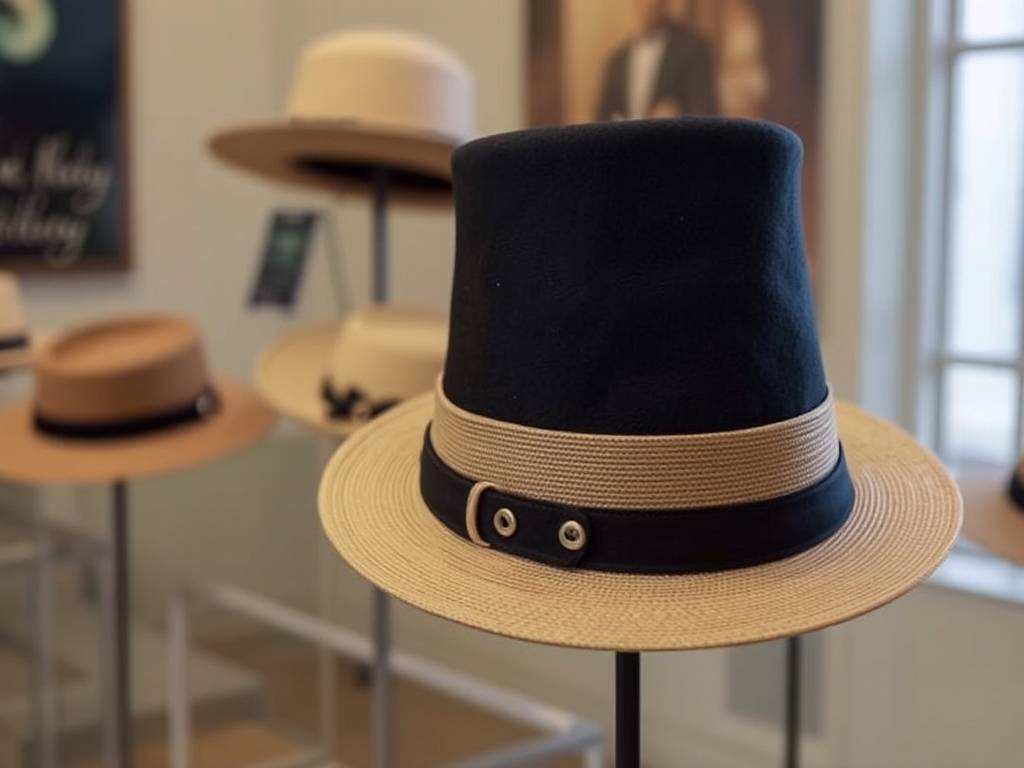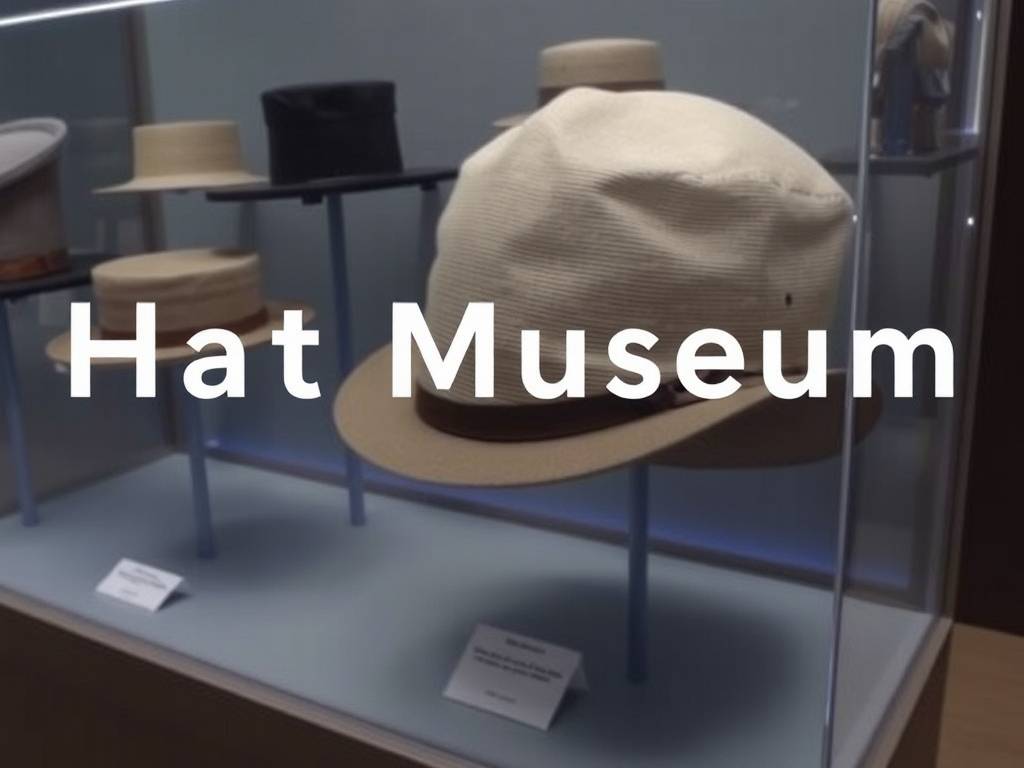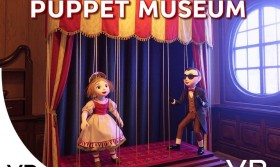Have you ever stood before a painting in a museum, a magnificent hat perched on the subject's head, and felt a pang of genuine curiosity? You wonder about its weight, the texture of the fabric, the world it existed in. For centuries, historical headwear has been locked away behind glass, untouchable and distant. We observed these artifacts, but we couldn't truly experience them. That distance is now a thing of the past. Welcome to the future of cultural immersion, a groundbreaking digital renaissance for the world of historical fashion. This is the story of the "Hat Museum VR" Historical Headwear Update, a project that is redefining how we connect with our sartorial past.
Imagine slipping on a virtual reality headset. The sterile museum walls dissolve, and you find yourself transported to the bustling, muddy streets of 15th-century London. The air is thick with the smell of woodsmoke and baking bread. A merchant walks by, his chaperon—a draped hood with a long, flowing liripipe—swaying with his gait. With a simple gesture of your hand, you can reach out and "touch" the coarse, undyed wool. You can bring the chaperon into your field of vision, rotating it to see the intricate stitching that holds its unique shape. This isn't passive observation; it's a time-traveling adventure for your senses. The core of this update is a shift from looking to being. It’s an unparalleled opportunity for historical headwear exploration, allowing you to inhabit the contexts that gave these items meaning.
The technology powering this experience is as sophisticated as the artifacts it showcases. This isn't a simple 360-degree photo gallery. Each hat, from a humble medieval coif to an extravagant 18th-century French "pouf," has been recreated using photogrammetry and high-poly 3D modeling. Every detail is captured: the subtle sheen of silk, the delicate veining of an ostrich feather, the slight tarnish on a silver hat buckle. The development team worked closely with textile conservators and historians to ensure that the digital recreations are not just visually accurate, but materially authentic. You can appreciate the difference between the stiffened buckram used to structure a Tudor gable hood and the pliable felt of a Napoleonic bicorne. This commitment to accuracy makes it an essential resource for anyone seeking an authentic historical fashion VR experience.

So, how does one embark on this journey through the history of hats? The process is designed to be intuitive and accessible for everyone, from a curious student to a seasoned historian.
First, you'll need to access the platform. The "Hat Museum VR" is available on major VR systems like Meta Quest and SteamVR, as well as a fully-featured desktop mode for those without a headset. Once you download and launch the application, you are greeted by a central, celestial "atrium"—a beautiful, abstract space that serves as your gateway to the ages.
From this hub, you have two primary modes of exploration: the Timeline and the Geographical Map. The Timeline is a sweeping visual ribbon, with eras marked by iconic headwear silhouettes. You can drag the timeline to any period that piques your interest—from the draped hoods of the Early Middle Ages to the psychedelic prints of the 1960s. The Geographical Map, on the other hand, lets you zoom in on specific regions. Compare the wide-brimmed sombrero of a Mexican charro with the sleek top hat of a Victorian London gentleman, understanding how culture and climate shaped design.
Selecting a specific artifact opens up a world of interaction. The "Examine" mode lets you hold the hat in your virtual hands. You can zoom in, rotate it under different lighting conditions, and even activate an "X-ray" view to see the hidden internal structure—the boning, the wire frames, the layers of lining. This feature is a revelation for understanding the craftsmanship involved.
But the true magic happens when you enter the "Context" mode. Here, you are placed directly into a historically accurate environment. Choose a 1920s cloche hat, and suddenly you're in a smoky jazz club, the sound of a saxophone filling the air. You can look down and see the hat on your own head, its brim framing your view of the world just as it would have for a flapper a century ago. This contextual learning is what sets the experience apart, offering a deeply engaging way to understand historical headwear in its native habitat.
The educational potential of this update is staggering. For too long, fashion history has been seen as a niche, even frivolous, subject. This platform demonstrates that headwear is a direct window into the social, economic, and technological realities of its time. Why did the stovepipe top hat become a symbol of the 19th-century gentleman? In the VR experience, you don't just read about it; you feel the imposing verticality of the hat, you understand its association with industry and propriety by standing in a recreated industrial-era parliament.
Educators can curate custom tours for their students. A lesson on the French Revolution can include a module where students "try on" a Phrygian cap, the symbol of liberty and revolution, and stand in a tumultuous Parisian street. They can then contrast it with the elaborate, pre-revolutionary wigs and headdresses of the aristocracy, understanding the visual language of class conflict in a way a textbook could never convey. This is a powerful new frontier for interactive cultural heritage education, making history visceral and unforgettable.
Beyond formal education, the update is a playground for designers, artists, and anyone with a creative spirit. The "Design Studio" is a unique feature that allows users to deconstruct hats into their component parts and experiment with their own designs. Want to see what a Renaissance beret would look like in neon vinyl? Or apply the structural principles of a 1950s cocktail hat to a modern baseball cap? The studio provides the tools, fostering a unique dialogue between past and present. This creative sandbox encourages a new form of digital millinery and historical costume design, pushing the boundaries of inspiration.
We understand that with such an innovative concept, questions will arise. Let's address some of the most common queries in one convenient place.
What if I don't own a VR headset? Not a problem. The "Hat Museum VR" has a robust desktop mode that offers nearly all the same features, including the 3D examination of hats and the contextual scenes, which you can navigate with a mouse and keyboard.
How historically accurate are the environments and items? We have a dedicated board of historical advisors, including PhDs in material culture and practicing master milliners. Every item and environment is backed by extensive research from paintings, extant garments in museum collections, and primary source documents.
Is there a risk of damaging the digital artifacts? This is one of the great advantages of digital preservation. The original physical hats, often incredibly fragile, are safe in climate-controlled museum vaults. Our platform allows them to be "handled" and enjoyed by millions without any risk of deterioration, ensuring their legacy for future generations.
Can I contribute to the collection? Yes! We have a "Community Corner" where independent researchers and institutions can submit their own 3D scans of headwear, pending a review by our historical board. We are always looking to grow our collection and tell more diverse stories from around the globe.

What are the future plans? Our roadmap includes adding haptic feedback support for an even more tactile experience, multi-user tours where groups can explore together with a guide, and expanded collections focusing on specific themes like military headwear and bridal crowns.
The "Hat Museum VR" Historical Headwear Update is more than just a museum exhibit; it is a living, breathing, and expanding digital archive. It breaks down the physical and conceptual barriers that have long separated the public from the profound and often beautiful world of historical dress. It transforms the hat from a static object under glass into a dynamic storyteller. This is not the end of a journey, but a spectacular new beginning. It invites us all to not just see history, but to step inside it, to wear it, and to understand the people of the past on a more human, more intimate level than ever before. The door to the wardrobe of history is now open, and an invitation is extended to you.


















